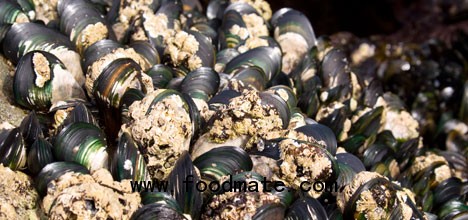A 42-year-old woman and a 60-year-old man both came into the hospital’s emergency department last night, says a hospital spokesperson.

This follows the seven people – five in Rotorua and two in Tauranga – hospitalised for poisoning at the weekend.
Bay of Plenty District Health Board communications manager Diana Marriott says one man who presented on Saturday remains in Tauranga Hospital.
Two other men remain in Rotorua Hospital in a stable condition.
The people suffered symptoms ranging from tingling of the mouth and face, weakness in their arms and diarrhea and vomiting.
The people who presented at the weekend had all eaten shellfish collected from the coastline between Mount Maunganui and Papamoa reports Toi Te Ora.
Toi Te Ora Medical Officer of Health, Dr Phil Shoemack says the levels of toxins have gone above the guideline levels to the stage where there is potential for harm.
“We advise people to abstain from collecting any.
“The levels are unacceptable but it is up to each individual person to make their own level of choice.”
Since August 2012 high levels of paralytic shellfish poison have been found in shellfish along a significant stretch of coastline.
A health warning is already in place advising against the collection of shellfish from Tairua on the east coast of the Coromandel Peninsula, south to Waihi Beach and along the Bay of Plenty coast to Whakatane Heads in the Eastern Bay of Plenty.
The warning includes Tairua Harbour as well as Tauranga Harbour, Maketu and Waihi estuaries, Matakana and Motiti islands, and all other inshore islands along this coastline.
The health warning applies to all bi-valve shellfish including mussels, pipi, tuatua, cockles, oysters, scallops as well as cat’s-eyes and kina (sea urchin).
Shellfish in the affected area should not be taken or consumed. Paua, crayfish and crabs can still be taken but as always, the gut should be removed before cooking.
Phil says Toi Te Ora is working with Environment BOP and the Ministry of Primary Industries to monitor the levels.
He says signs are in place along the coastline.
“The levels go up and down, the warning stretches all the way from Coromandel all the way to Whakatane – about 200km of coastline.”
There are 10 monitoring sites on the coastline and Phil says from week to week the levels vary.
There is an identical warning in place from Taranaki to the Kaipara Harbour.
Phil says there are no reported illness from shellfish in Taranaki region, but he says it could be due to the density of population living along the coastline in the wider Bay of Plenty region.
“We have had some anecdotalreports but we have checked with doctors and they have no reported seeing anyone until Friday night.”
Consumption of shellfish affected by the paralytic shellfish toxin can cause numbness and tingling around the mouth, face or extremities; difficulty swallowing or breathing; dizziness; double vision; and in severe cases, paralysis and respiratory failure.
These symptoms usually occur within 12 hours of a person consuming affected shellfish. Anyone suffering illness after eating shellfish should seek medical attention.
Phil says toxic poisoning at the very severe end can cause paralysis.
“That weakness causes paralysis and the person struggles to breath.”
He says there have been reports of death due to toxic shellfish poisoning overseas but not in New Zealand.
“The potential is there.”
For up to date information on health warnings in Bay of Plenty go to www.ttophs.govt.nz and click on health warnings. Or call 0800 221 555 and select option 6 to speak to the on call Health Protection Officer.





